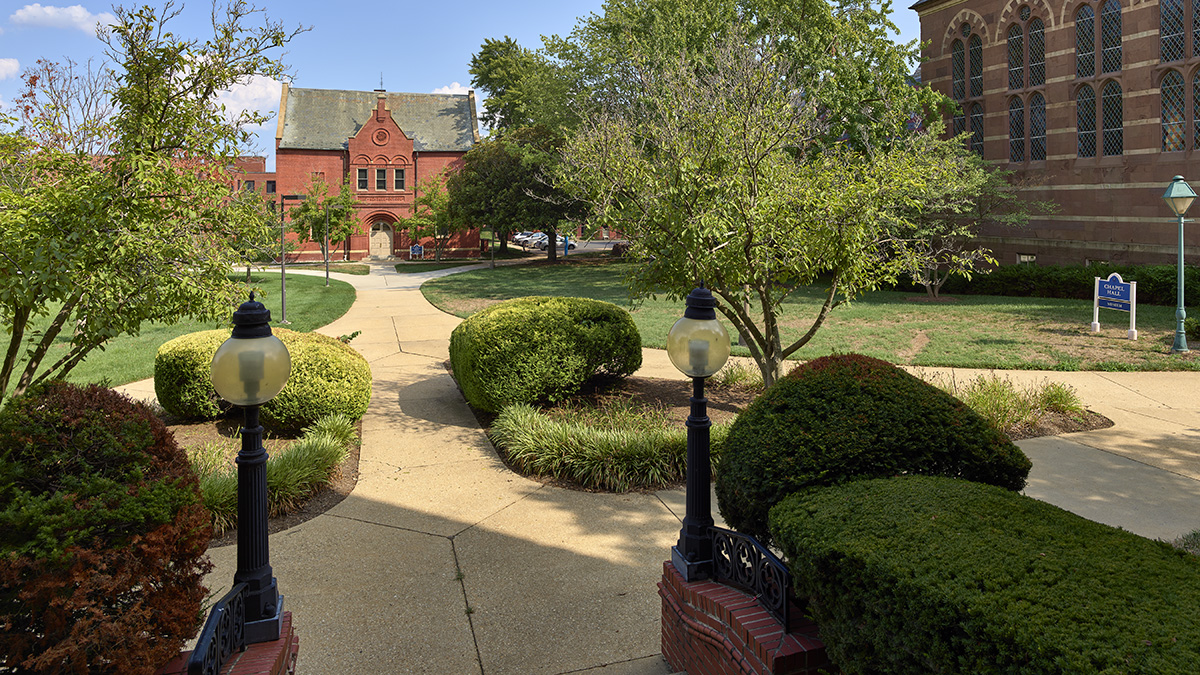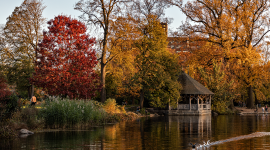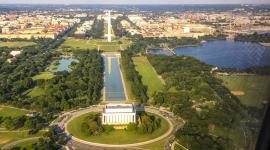Landscape Information
Founded in 1864 as the National Deaf-Mute College, this institution emerged from the Columbia Institution of the Deaf, Dumb, and Blind, a grammar school chartered by the U.S. Congress in 1857. The campus was laid out by the landscape architecture firm Olmsted, Vaux & Co. beginning with a plan in 1866. The initial buildings were designed by Frederick Withers, a partner in the firm, Vaux, Withers & Co. The institution’s name was changed to Gallaudet College in 1917, and again to Gallaudet University in 1986.
Situated in northeast Washington, D.C., the university was initially surrounded by farmland and has since been hemmed in by gridded urban and industrial development, with a rail depot located directly north. Olmsted and Vaux’s plan called for dense border plantings and a meandering circulation network designed to provide choreographed passages of scenery. As recommended by the firm, the southwest corner of the campus was purchased to house faculty residences separated from academic buildings by an open field, today known as Olmsted Green. Early buildings include the flagship Chapel Hall (1871), prominently overlooking the main entrance on Florida Avenue, the President’s House (1869), and College Hall (1878), all by Withers.
Over the twentieth century, the campus expanded north, with substantial growth in the 1960s and 1970s. In 1988 during a week-long protest students pitched tents near the Olmsted Green and barricaded the main vehicular entrance. The demonstration resulted in the appointment of the institution’s first deaf president.
During this time the Modernist Hanson Plaza was built, which was rehabilitated in the 2010s by Studio Twenty Seven. In 2016 the University commissioned the U.K.-based architectural firm Hall McKnight to make the campus more welcoming along its western border. In 2018 Dangermond Keane Architects, in partnership with Stantec produced a master plan to guide future development.
Bookended between Chapel Hall and the Merrill Arts Learning Center, the Gallaudet Mall serves as the university’s epicenter. Today, the campus measures 99 acres, with its original fourteen-acre core designated a National Historic Landmark in 1965 and listed in the National Register of Historic Places as a historic district in 1974.
















